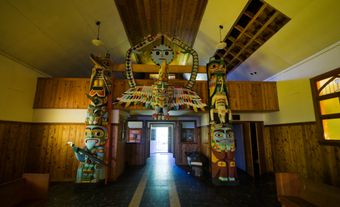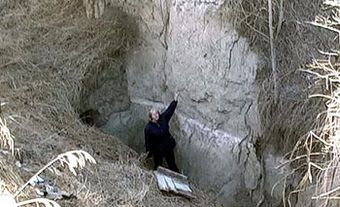Urgent Ethnology
Urgent ethnology involves recording on sound tapes, films, photographs and in writing the endangered languages and traditions of the Inuit, First Nations and Métis people of Canada. Recent decades have seen a dramatic increase in the pace of social and cultural change, leading to an erosion of the traditional cultures of Canada's original inhabitants. Research priority is given to those aspects of language and culture that are undergoing the most rapid change and require immediate documentation to prevent their being lost. This knowledge is of special importance to people of Indigenous ancestry who wish to maintain their cultural identity. It is also essential for a complete understanding of Canadian history and prehistory.
After 1960, contract research conducted by the National Museum of Man (Canadian Museum of History) was given a higher profile by the Ethnology Division, which initiated the Urgent Ethnology Program in 1972. Research projects cover all cultural regions of Canada including the Prairies, northeastern woodlands and the Subarctic. Fieldwork stresses ethnomedicine, ethnobotany (see Plants, Indigenous Uses), material culture and mythology. There have also been projects in art (see Indigenous Art), cultural ecology, music (see Indigenous Peoples: Music), individual life histories and genealogy. A major emphasis has been on ethnolinguistics. Nowhere is the infringement of acculturation felt more than in oral tradition, including language itself.
As nearly as can be determined, 50 Indigenous languages survive in Canada, though only three have more than 5000 speakers (see Indigenous Languages in Canada). A few other languages have at least reasonable chances of surviving in the near future, but the majority are endangered. At least seven Indigenous languages were approaching extinction in the mid-1990s, with only a handful of elderly speakers still living at the time.
An urgent ethnology program requires not only actual ethnographic fieldwork but also the contributions of a knowledgeable archival and technical staff. The program of the Canadian Museum of Civilization includes the preservation of the voluminous correspondence and archival collection of Edward Sapir and Diamond Jenness, early Canadian ethnologists. At the technical level, work involves the preservation and restoration of quickly deteriorating films, such as those of Copper Eskimo life shot between 1913 and 1918 by the Canadian Arctic Expedition. As more Indigenous people move to large, modern communities (see Indigenous People, Urban Migration), as the number of camps on the land dwindle each year and as the number of men and women knowledgeable in the old ways diminish, the importance of urgent ethnology increases.

 Share on Facebook
Share on Facebook Share on X
Share on X Share by Email
Share by Email Share on Google Classroom
Share on Google Classroom


